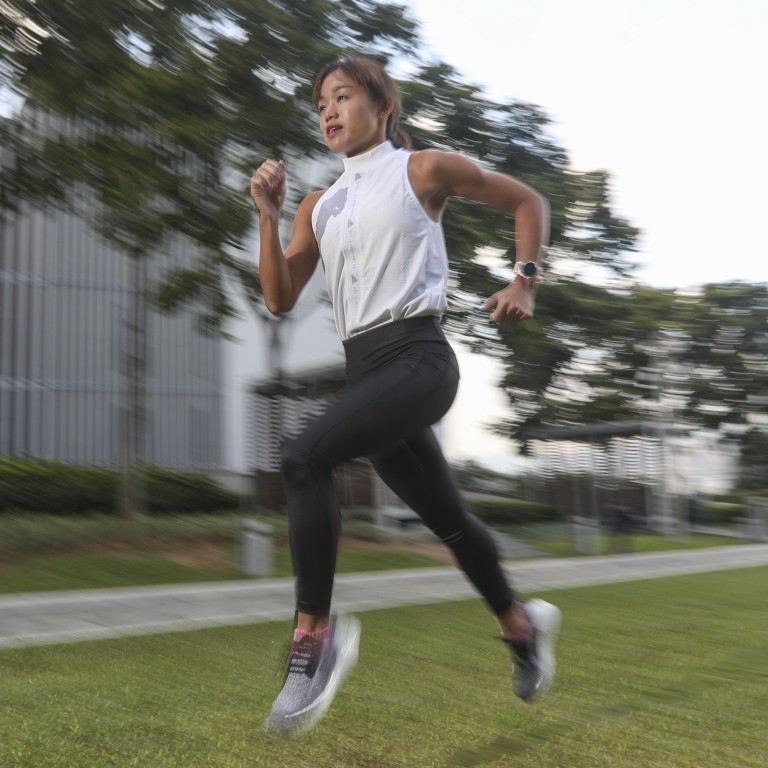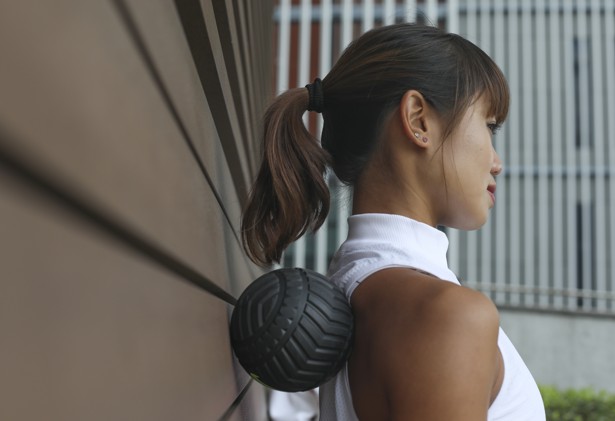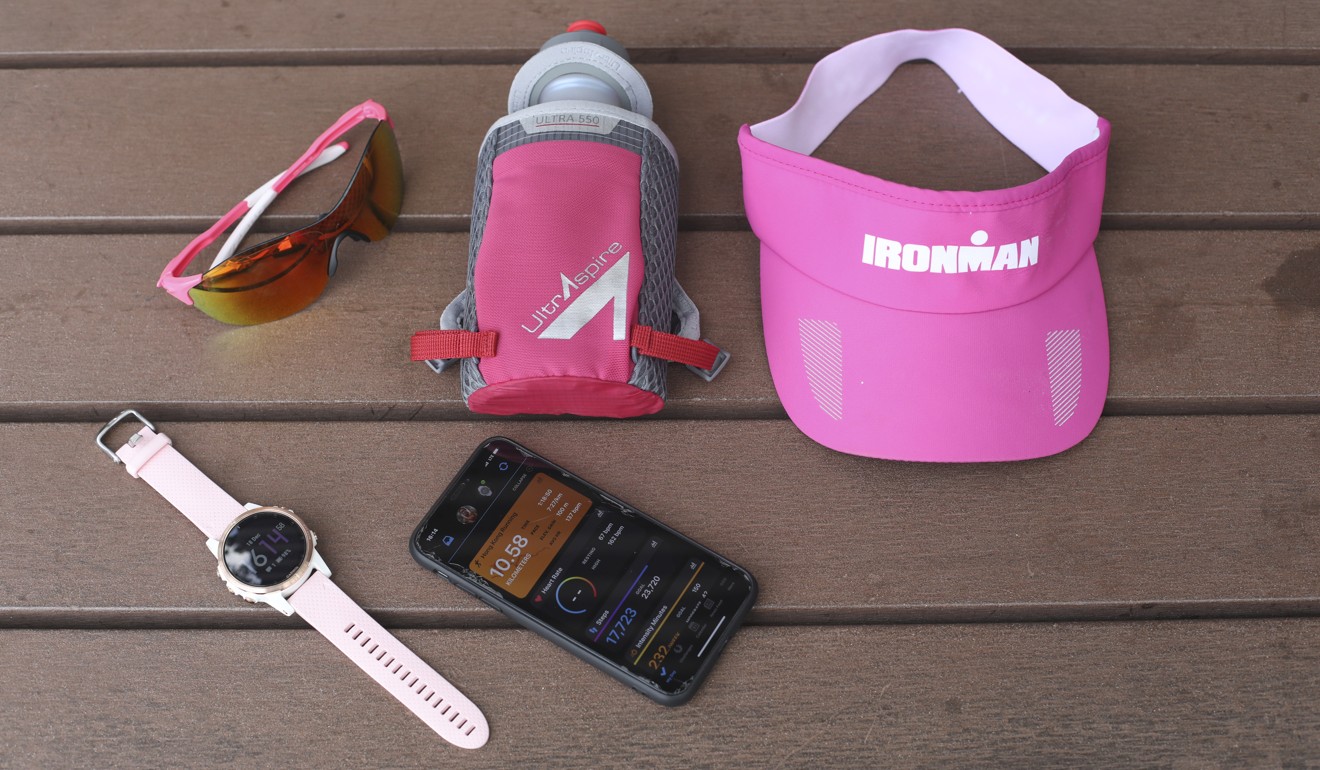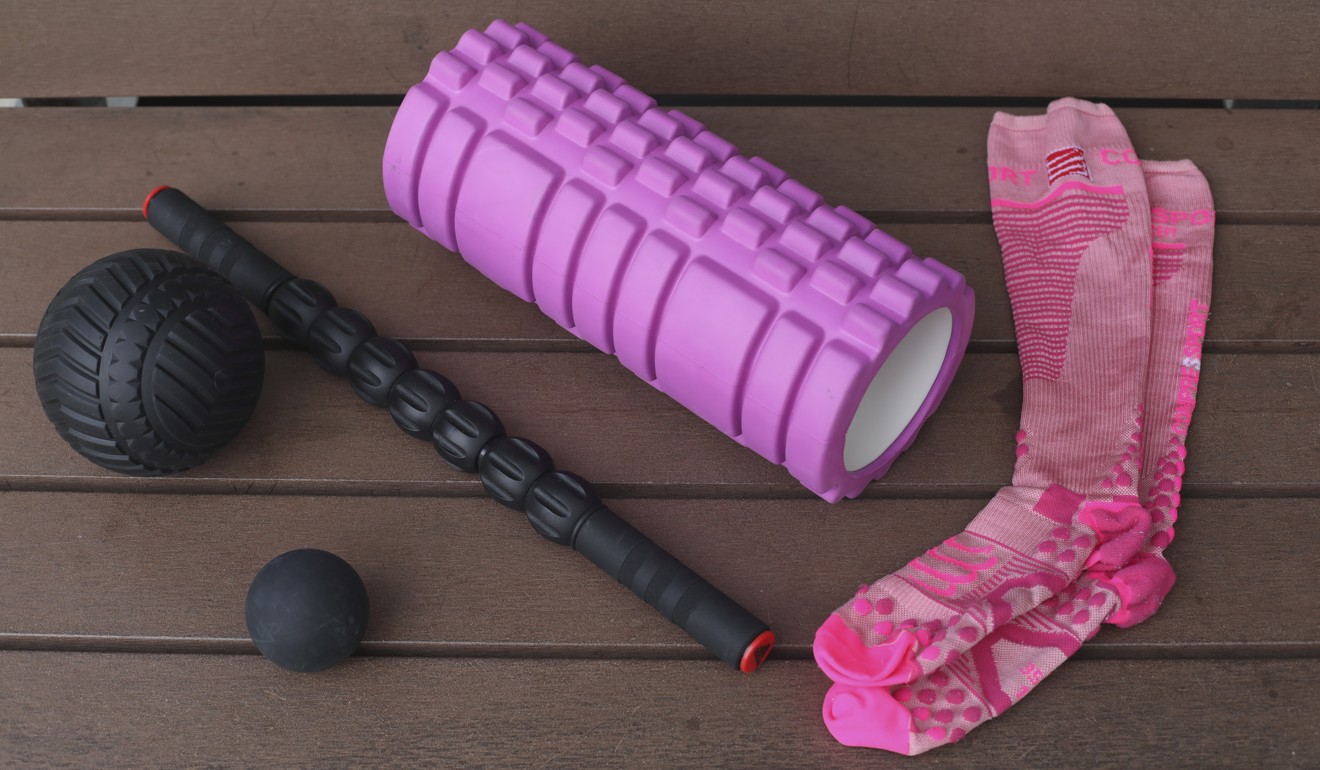
How a Hong Kong triathlete trains for half Ironman races – her tips for beginner racers
- Since Leanne Szeto made the switch from regular triathlons to longer distances she has had to work much more on endurance
- Her smartwatch and its analysis of heart rate data is an important tool in her training sessions
Even for elite athletes, competing at the Olympics isn’t everything.
Leanne Szeto is a seasoned Hong Kong triathlete and has competed on behalf of the city at major events such as the 2014 Asian Games in Korea, where she finished eighth. Back then, she specialised in Olympic-distance triathlons in which participants swim 1.5km (0.9 miles), cycle 40km and run 10km.
How Hongkonger became world’s fastest Indian endurance racer
But since stepping up to long-distance triathlon racing last year, which is not featured in major events such as the Olympics, the 27-year-old is no longer in Hong Kong’s official squad.
“For more than 10 years I had been doing the shorter distance,” she says. “I wanted to transition to a more challenging distance.”

With her focus moving to longer-distance races like the half Ironman – a triathlon consisting of a 1.9km swim, 90km bike ride and 21.1km run that can take up to five hours – her training shifted more to endurance work than speed improvement. Last year, she finished fifth in the pro-women category at Ironman 70.3 in Japan with a time of 4 hours, 57 minutes and 21 seconds.
Coming up is the Hong Kong Standard Chartered Marathon in February, in which she will race the 21km half marathon to prepare for future long-course triathlons (the distance is the same as the running segment of such races).
To be a top racer in such demanding endurance races, a huge amount of training is required. Szeto trains every day, despite having a job. On weekdays she alternates between swimming, biking and running sessions. On weekends she combines sessions so her body gets used to transitioning from one activity to another.

She gets up at 5am on weekdays to squeeze in an easy-going session before heading to work as a mechanical engineer. She also trains at lunchtime. “It’s mostly on running and sometimes strength work like strength conditioning,” she says.
Sometimes she hits the Fitzio Fitness Rehabilitation Clinic in Central after work to do weights with a coach to build muscle strength, so she can push faster in a race and let her body last the whole event. Strength conditioning involves legs, core or upper body routines. In preparation for the Standard Chartered marathon, her training involves running and building strength in her legs through lunges and squats.
Her half marathon time last year was one hour 23 minutes. “This year, I hope to make it under that,” she says.
Szeto hopes to draw more people to triathlons and as part of that goal she leads running groups, particularly for beginners aiming for their first triathlon. She advises taking on shorter distances at first, such as a sprint triathlon, which involves a 750m swim, 20km bike ride and 5km run.
Sometimes people get cramps and can’t run after cycling, or are out of breath after the swim [and can’t continue]. So put a lot of focus on training those [transitions]
A common mistake for newcomers, she says, is to jump to full-length races without adequate training. “Some people register for a marathon for the longest [event] because they think: ‘If I pay the same price, I would rather go for the longest,’” she says. Such decisions risk injury or serious health consequences.
She suggests giving yourself six months to get your mind and body prepared for a triathlon. The hardest leg is the swim, she explains, particularly for amateur participants. They should build confidence by treading ocean water, where visibility is low, and learning how to filter out distractions – for example, other racers aggressively kicking away around them.
Building this technique takes time, but is important – and not just to get a good start. “Let’s say 3,000 participants start the race together. If you can’t breathe and start to drown at sea, the lifeguard may not spot you … some people have got killed at this part of the triathlon in the past,” Szeto warns.

Another tip: train different disciplines together to get your muscles conditioned to transitions from one sport to another. On weekends, Szeto might do something like a long bike session followed by a 5km run “to simulate the feeling of going from bike to run [in a race]”. Beginners should condition their body for multi-sport transitions, otherwise they will unravel on race day. “Sometimes people get cramps and can’t run after cycling, or are out of breath after the swim [and can’t continue],” she says. “So put a lot of focus on training those [transitions].”
Heart health is another main concern.
Research recently published in the journal Circulation raised concerns over the impact of marathons on inexperienced racers. Researchers in Spain looked at biomarkers of cardiac tissue stress in 61 participants who were placed in groups that ran either a full 42km, a half marathon or a 10km event. They found heart stress highest in amateur runners who completed the full marathon. This shows the importance of training in advance of events and also of matching the distance you race based on your training levels.

Szeto encourages her students to monitor their heart during training and on race day. She uses a Garmin smartwatch designed for triathletes to track laps in real time while measuring parameters such as time, distance, temperature, elevation and most importantly, heart rate.
The bluetooth-enabled device sends data gathered from the watch to your smartphone to analyse it. The analysis includes determining your five “heart rate zones”, from zone one (your low impact heart rate) to zone five (your highest intensity heart rate). Recently, Szeto’s device showed that she was not pushing hard enough during her easy-going morning run, with her heart rate hovering between 150 and 170 beats per minute (BPM) – zone four, according to the data.

During races, Szeto uses the watch to manage her energy expenditure. “I use the watch to make sure I’m at a good pace, and the GPS gives you the distance in kilometres, including how much I have left [to complete the race],” she says, adding that the information on distance remaining helps motivate her to power through the last stretch.
During training, the data helps her guide sessions to alternate between high- and low-intensity training so she doesn’t overwork her heart. “Let’s say I did a three-hour bike session at zone five … my heart would explode if I kept at it at 170 BPM for three hours,” she says. Instead she would aim for a rate that stayed at the lower end of zone four, for example. “I always advise my running students to look at their heart rate, too.”
Hong Kong mum who runs marathons for fun – 64 in 30 years
Next up, Szeto aims to conquer the half Ironman at Ironman 70.3 in Taiwan next year. The course features a predominantly flat terrain and a lake swim, making it a prime opportunity for her to beat her personal best of four hours 39 minutes, which she clocked at the half Ironman in Vietnam last year as a third-place finisher in the elite category. She hopes to shave at least 10 minutes off that time.
Since specialising in long-course triathlons, Szeto has become convinced she has a lot speed left in her to improve results. In future, as she builds endurance experience, she hopes to tackle a full Ironman at the Ironman World Championship in Hawaii, which involves a 3.9km swim, 180km bike ride and a 42.2km run. “After 30, I will give it a try.”

